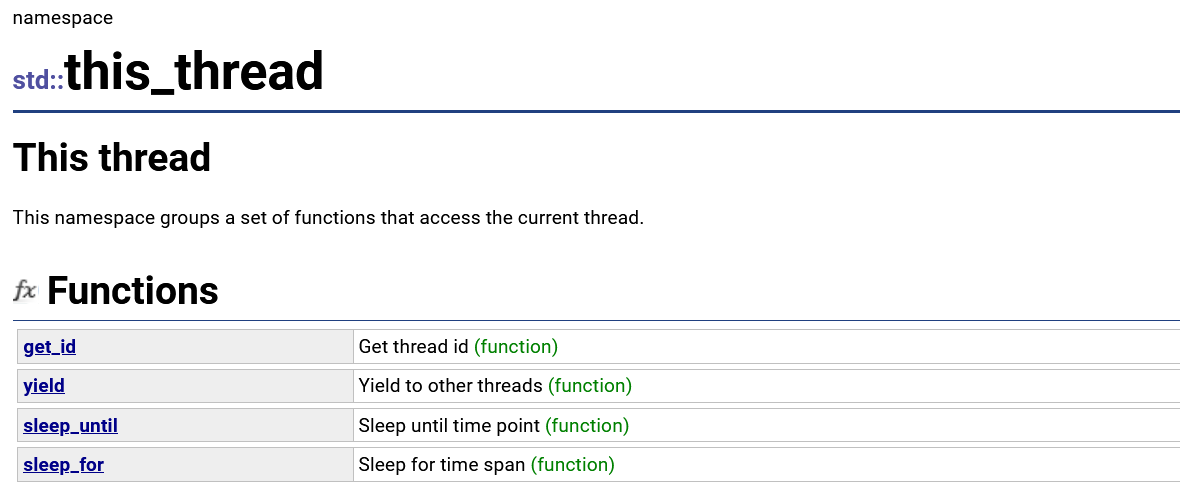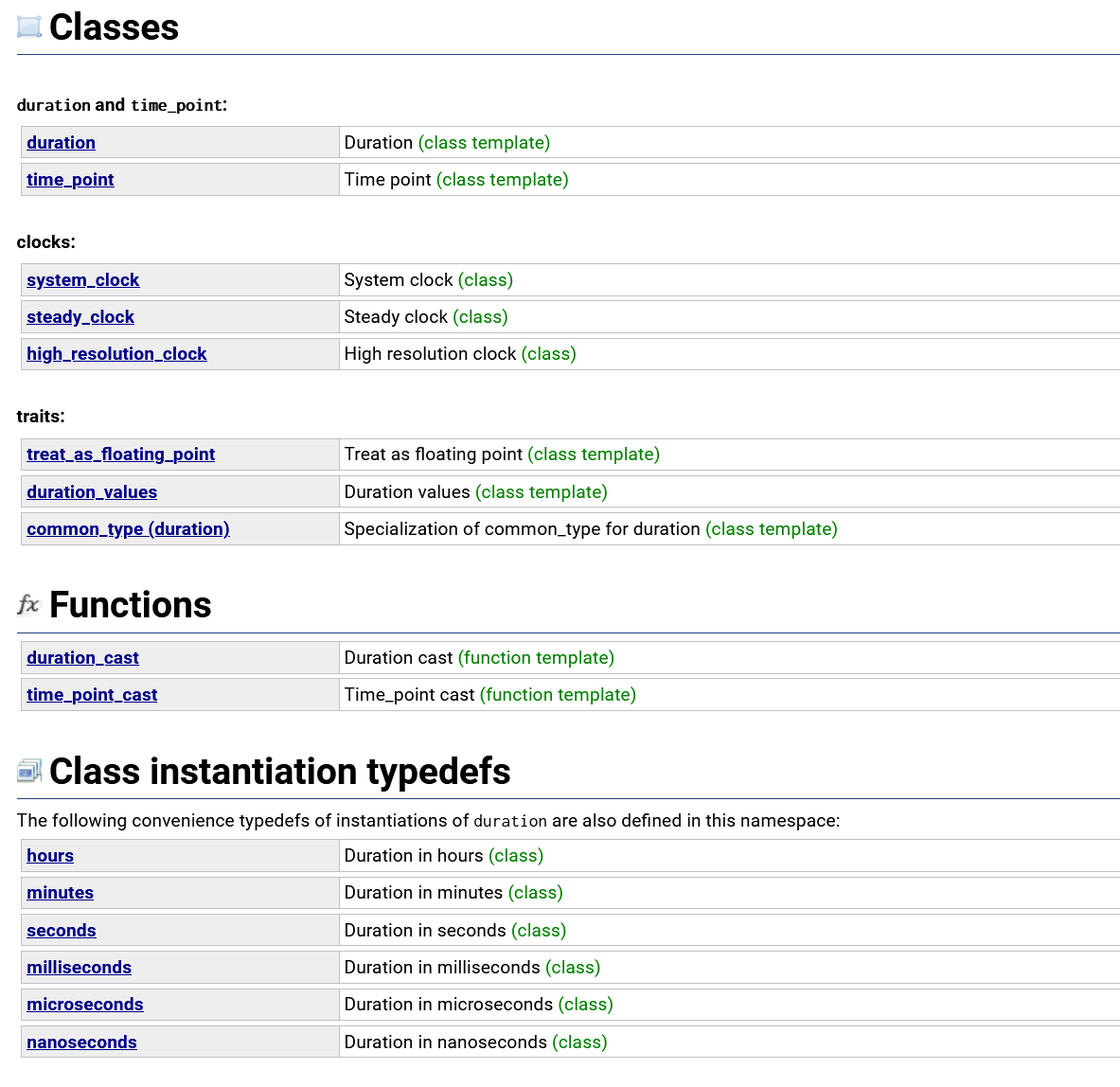C++
2024 年 12 月 9 日
[C++] C++标准中的线程: C++标准线程、锁、条件变量、原子操作的使用,
Linux线程的相关内容, 概念、锁、条件变量、信号量等在前面的文章中已经做了介绍C++在
C++11标准中, 新增了线程相关的类等: std::thread std::mutex std::condition_variable std::atomic等等C++11标准中的线程, 只是为跨平台实现的, 底层概念上与Linux或Windows上没有差别本篇文章, 只是对相关类、接口的使用介绍
std::thread
std::thread是C++11实现的线程类, 头文件为<thread>: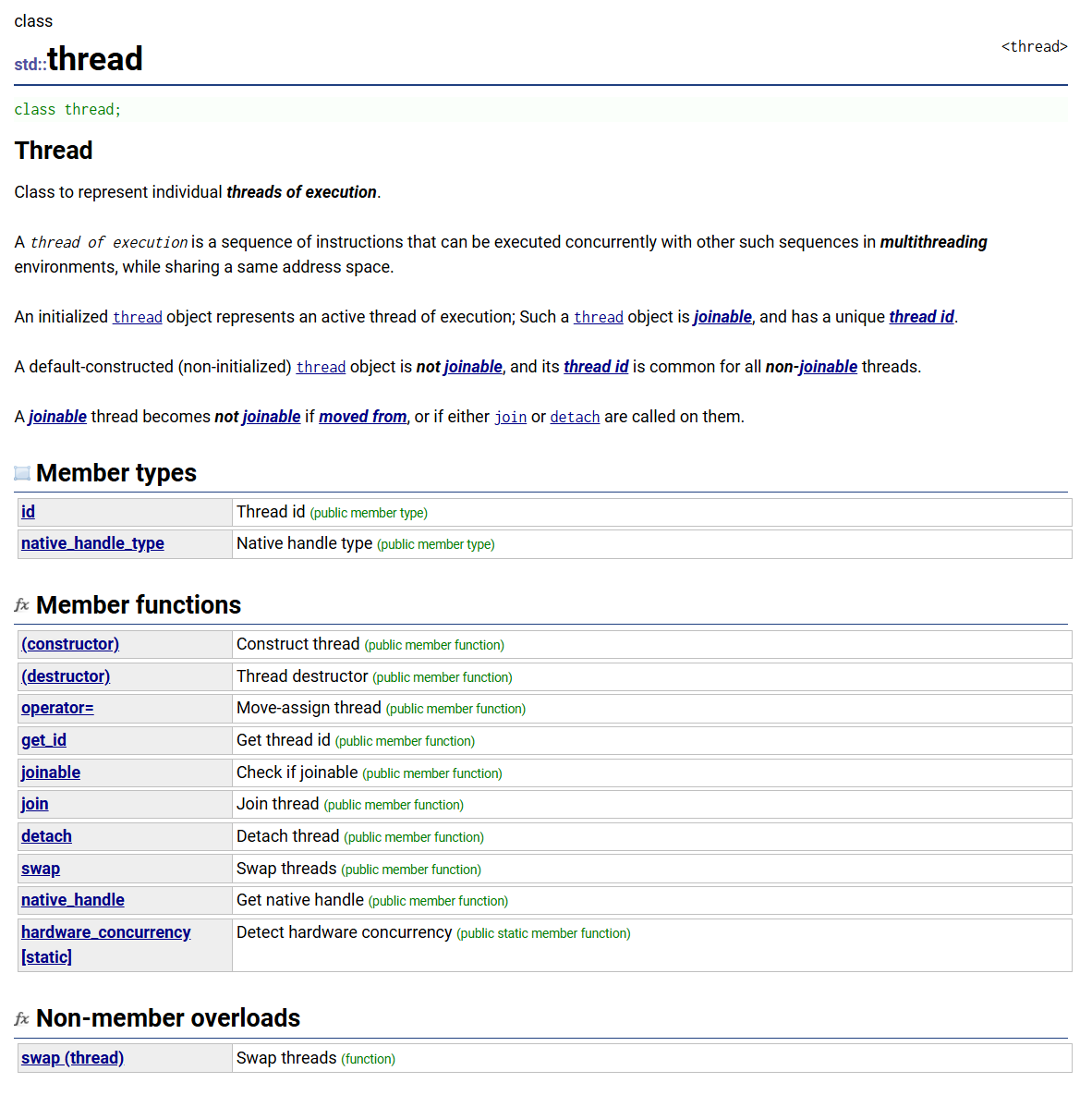
std::thread类的成员很少, 涉及到线程的id、创建、等待、分离、交换、销毁等以下的介绍中, 省略
std::命名空间访问
thread::id
std::thread创建的线程也有自己的唯一标识, 它不是Linux中的pthread_t, 而是C++自己实现的标识C++标准的线程标识类型是
std::thread::id, 不是基础类型, 而是C++封装的一个类: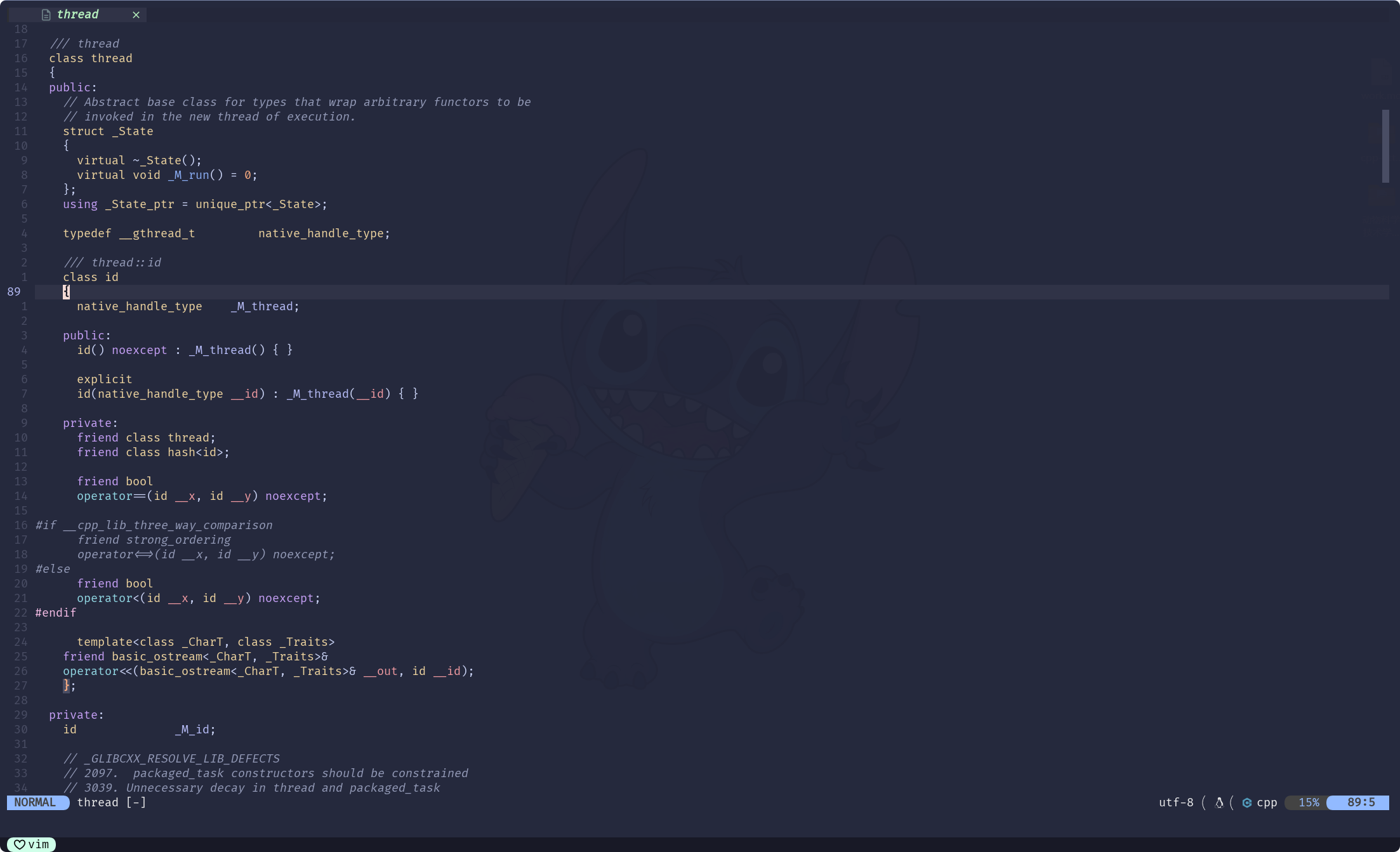
从相关的源码中可以看到,
thread::id是thread的一个内部类thread::id中, 存在成员对象_M_thread实际是unsigned long int类型数据, 作为线程的唯一标识符使用
<<向标准输出流输出, 可以打印出thread::id::_M_thread, 即 线程的唯一标识符thread **
thread是C++标准封装的线程类thread的构造函数, 就能创建线程: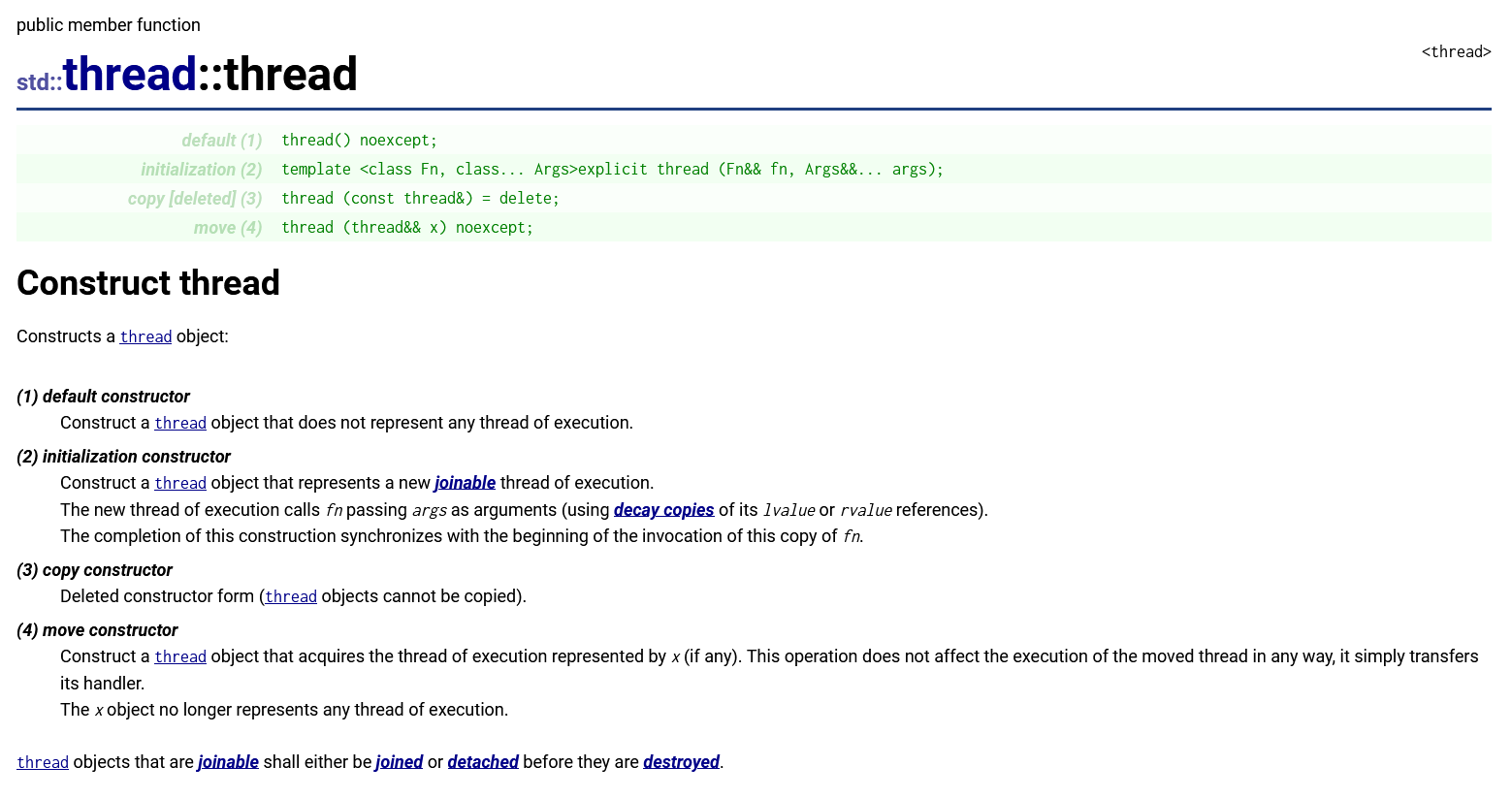
首先, 为防止线程被拷贝破坏线程的唯一性,
thread类禁用了拷贝构造函数和普通赋值重载函数: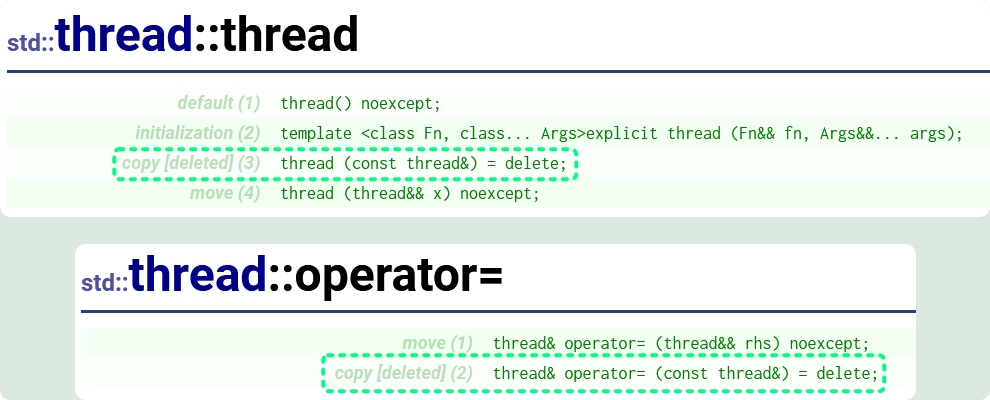
但保留了移动构造函数和移动赋值重载函数, 为必要时线程所有权的转移提供了方法
C++使用
std::thread创建线程非常的简单:#include <chrono>
#include <iostream>
#include <thread>
int cnt = 0;
void loopPrint() {
while (true) {
std::cout << "thread_"<< std::this_thread::get_id() << ", out: " << cnt++ << std::endl;
std::this_thread::sleep_for(std::chrono::milliseconds(500));
}
}
int main() {
std::thread td1(loopPrint);
td1.join();
return 0;
}上面代码中使用到一部分比较陌生的内容:
std::this_thread这是
C++11的一个命名空间, 内部提供了一些可以直接在线程内使用的接口
sleep_for(): 可以让线程sleep一段时间
sleep_until(): 可以让线程sleep到某个时间点
get_id(): 可以获取线程的id, 即thread::id
yield(): 可以让线程让出时间片, 即 调用后线程将不在继续执行, 让出时间片让其他线程执行
上面的代码中使用了
std::this_thread::get_id()和std::this_thread::sleep_for()用于获取线程
id和 让线程sleep上500ms
std::chrono
<chrono>是C++标准的时间库, 实现了一些有关时间的类和接口:上面使用
std::chrono::milliseconds(500), 就是实例化一个表示500ms的时间段对象另外还有其他的一些时间的类或函数
执行结果:

实例化
thread对象调用构造函数时, 参数传入需要让线程执行的函数, 就能创建一个执行传入函数的线程此时, 调用的构造函数是:

是一个模板化的构造函数:
-
第一个模板参数, 也是构造函数的第一个参数
需要传入, 让线程执行的函数, 即 线程函数
-
第二个模板参数, 是一个可变参数
这个可变参数, 实际是第一个参数的参数, 即, 线程函数的参数
如果线程函数没有参数, 就不用传参
原则上, 实例化线程时必须要传参, 为线程指定执行代码
如果实例化线程时不传参, 那么这个线程对象实例化出来, 什么用都没有
因为
std::thread的无参默认构造函数是编译器自动生成的, 基本什么都不会做:
所以, 使用
std::thread创建线程时, 必定要传参指定线程的执行代码thread线程函数传参问题 **
创建线程时, 需要指定 线程函数的
大多数情况, 线程函数是带参的, 此时就需要在创建线程时, 指明线程函数需要使用的参数
这也是
thread()的模板构造函数中, 可变参数存在的意义举一个简单的例子:
#include <chrono>
#include <iostream>
#include <thread>
void loopPrint(int cnt) {
while (cnt < 10) {
std::cout << "thread_" << std::this_thread::get_id() << ", out: " << cnt++ << std::endl;
std::this_thread::sleep_for(std::chrono::milliseconds(500));
}
}
int main() {
int cnt = 5;
std::thread td1(loopPrint, cnt);
td1.join();
std::cout << "主线程, cnt: " << cnt << std::endl;
return 0;
}
这段代码的执行结果为:

cnt成功传入到loopPrint()函数中, 而且是传值传参, 所以主线程内的数据不会被修改如果将
loopPring()参数改为 引用传参:void loopPrint(int& cnt) {
while (cnt < 10) {
std::cout << "thread_" << std::this_thread::get_id() << ", out: " << cnt++ << std::endl;
std::this_thread::sleep_for(std::chrono::milliseconds(500));
}
}尝试编译运行:
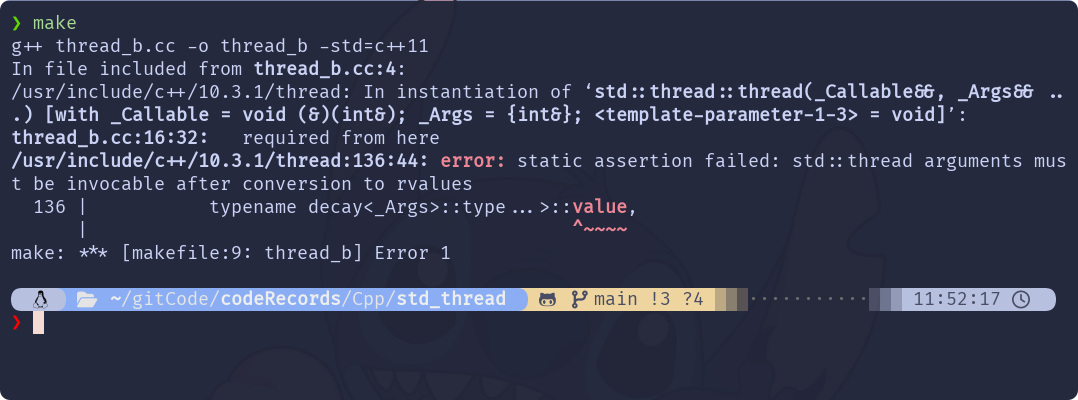
发现报错!
尝试将参数换为
const int&, 再试一试:#include <chrono>
#include <functional>
#include <iostream>
#include <thread>
#include <utility>
void loopPrint(const int& cnt) {
std::cout << "thread_" << std::this_thread::get_id() << ", out:" << cnt << std::endl;
std::this_thread::sleep_for(std::chrono::milliseconds(500));
}
int main() {
int cnt = 6;
std::thread td1(loopPrint, cnt);
td1.join();
std::cout << "主线程, cnt: " << cnt << std::endl;
return 0;
}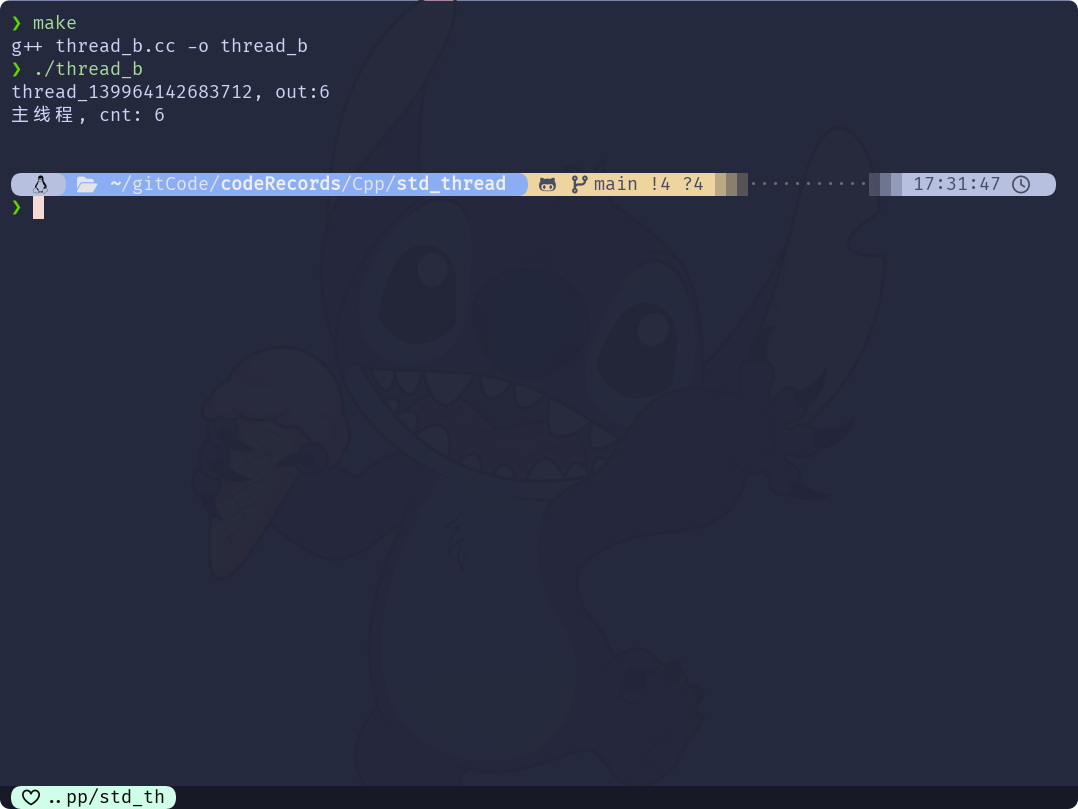
发现又可以了!
回过头, 这里直接引用传参为什么会报错呢?
报错的提示语是:
error: static assertion failed: std::thread arguments must be invocable after conversion to rvalues这个报错的意思为: 静态断言失败:
std::thread参数, 在转换为右值时必须可用线程函数的参数是
int&类型的, 是一个左值引用类型, 好像和右值没有关系但是如果改为
const int&, 就能编译通过而C++左值引用有一个特性是: 左值引用无法引用右值, 但是
const左值引用可以引用右值而且编译的报错信息是参数在转换为右值时必须可用
这可能说明一个问题,
std::thread构造函数内部创建线程, 向线程函数传参传的实际是一个右值即, 构造
std::thread线程时传参, 构造函数会在内部将可变参数转换成右值, 再传给线程函数从上面的现象中, 可以猜测出这一点
结合
std::thread构造函数原型:template <typename _Callable, typename... _Args, typename = _Require<__not_same<_Callable>>>
explicit thread(_Callable&& __f, _Args&&... __args);可变参数使用了万能引用, 而万能引用之后, 如果要以原类型再传参, 通常要通过
std::forward()阅读
std::thread源码, 可以发现thread构造函数中有一段用到了模板参数:using _Invoker_type = _Invoker<__decayed_tuple<_Callable, _Args...>>;
_M_start_thread(
_S_make_state<_Invoker_type>(std::forward<_Callable>(__f),
std::forward<_Args>(__args)...),
__depend);
}_M_start_thread()很明显是用来启动线程的参数是
_S_make_state<_Invoker<__decayed_tuple<_Callable, _Args...>>>()猜测参数是线程创建和初始化的过程:
template <typename _Callable>
struct _State_impl : public _State {
_Callable _M_func;
template <typename... _Args>
_State_impl(_Args&&... __args)
: _M_func{ { std::forward<_Args>(__args)... } } {}
void _M_run() {
_M_func();
}
};
void _M_start_thread(_State_ptr, void (*)());
template <typename _Callable, typename... _Args>
static _State_ptr _S_make_state(_Args&&... __args) {
using _Impl = _State_impl<_Callable>;
return _State_ptr{ new _Impl{ std::forward<_Args>(__args)... } };
}_S_make_state相关的代码, 并没有明显转换参数的代码而
_S_make_state()正式进入函数体之前, 它的参数还需要创建一个类_Invoker<__decayed_tuple<_Callable, _Args...>>// A call wrapper that does INVOKE(forwarded tuple elements...)
template <typename _Tuple>
struct _Invoker {
_Tuple _M_t;
template <typename>
struct __result;
template <typename _Fn, typename... _Args>
struct __result<tuple<_Fn, _Args...>>
: __invoke_result<_Fn, _Args...> {};
template <size_t... _Ind>
typename __result<_Tuple>::type _M_invoke(_Index_tuple<_Ind...>) {
return std::__invoke(std::get<_Ind>(std::move(_M_t))...);
}
typename __result<_Tuple>::type operator()() {
using _Indices = typename _Build_index_tuple<tuple_size<_Tuple>::value>::__type;
return _M_invoke(_Indices());
}
};
template <typename... _Tp>
using __decayed_tuple = tuple<typename decay<_Tp>::type...>;
public:
// Returns a call wrapper that stores
// tuple{DECAY_COPY(__callable), DECAY_COPY(__args)...}.
template <typename _Callable, typename... _Args>
static _Invoker<__decayed_tuple<_Callable, _Args...>>
__make_invoker(_Callable&& __callable, _Args&&... __args) {
return {
__decayed_tuple<_Callable, _Args...> {
std::forward<_Callable>(__callable),
std::forward<_Args>(__args)... }
};
}__decayed_tuple是tuple<typename decay<_Tp>::type...>它的作用, 是使用
decay将参数包的参数类型进行衰减, 并创建一个元组tuple即, 如果传入的参数是左值引用或右值引用, 经过
decay之后, 引用属性会被衰减掉; 如果传入的参数是函数类型, 将会衰减为函数指针类型然后, 会将衰减之后的类型和数据构造出一个
tuple元组, 这个元组里, 存储的都是传入参数的原始类型的副本即,
tuple中的数据都是没有任何引用属性的原始类型的数据, 只不过数据值与传入值相同
版权声明:自由转载-非商用-非衍生-保持署名(创意共享3.0许可证)
作者: 哈米d1ch 发表日期:2024 年 12 月 9 日
